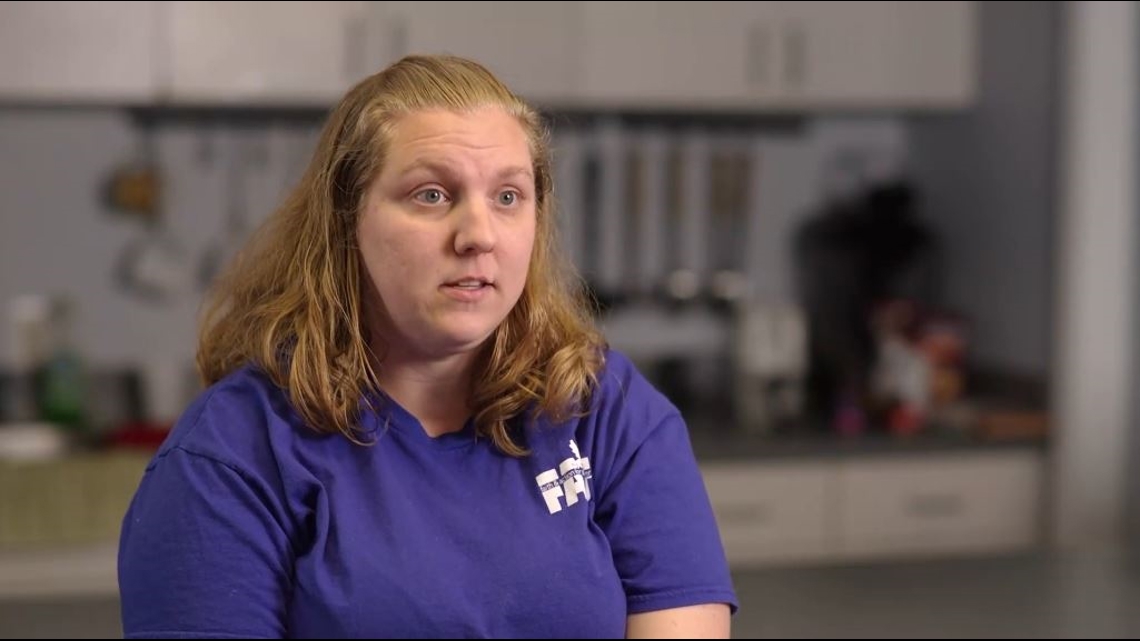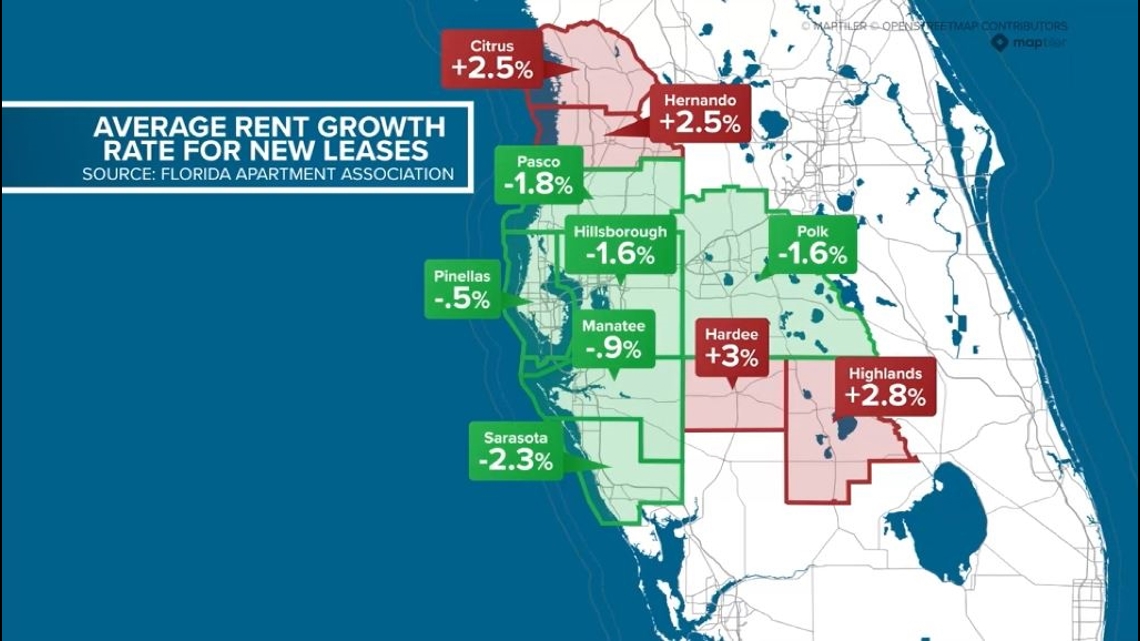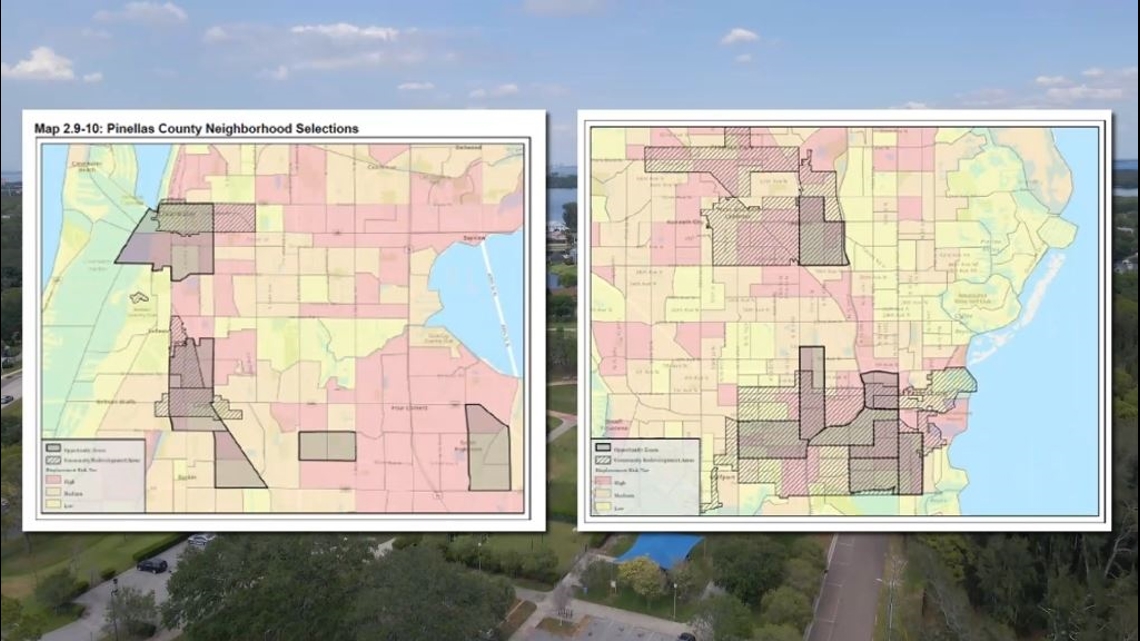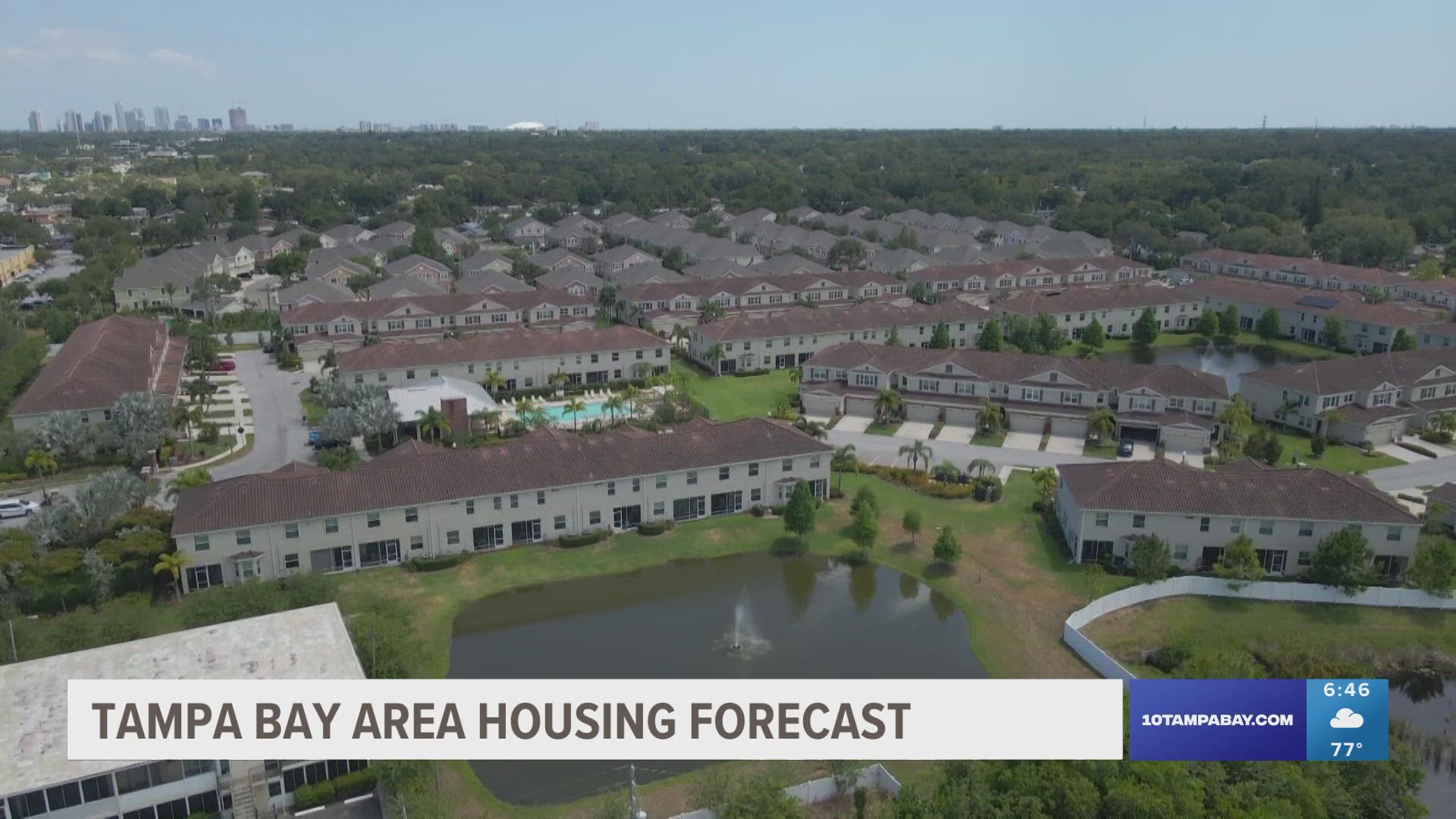ST. PETERSBURG, Fla. — By the end of the decade, Florida could need more than half a million additional homes to keep up with our population growth.
That estimate from the Florida Apartment Association is just one of the startling numbers 10 Investigates uncovered in our research into the future of home ownership and renting in the Tampa Bay area.
In the first story of 10 Tampa Bay’s monthlong focus on affordable housing, we’re looking ahead with this forecast for our local housing market.
Affording a place to call home can be a vulnerable, emotional topic.
“So, first off, my emotions just go, like, from sadness to anger,” Reverend Courtney Jones said.
As a pastor in St. Pete, she tells us it’s a problem affecting her congregation and her own family.
“So, one of my members… his rent is $1,450 for this one-bedroom efficiency apartment… He's still having to work well into his 70s, to continue to be able to afford this,” Jones said. “If we didn't buy when we bought, we would not be able to live here… My stepson, for the longest time, had to live with us because he couldn't afford a place to live.”


According to a report from real estate brokerage company Redfin, rising home prices and interest rates have widened the real estate wealth gap.
According to the company’s analysis of Home Mortgage Disclosure Act data, last year, just under 6% of new mortgages went to very low-income Americans. Redfin identified the national median household income for “very low-income” buyers as $41,000.
About 45% of new mortgages went to “high-income buyers.” Redfin said people in that group had a median household income of $172,000.
Here in the Tampa area, Redfin found that gap was even wider: Just 2% of new mortgages went to very low-income earners while 52% went to high-income buyers.
“We still have a tremendous demand," Adam Grenville, 2024 president of Great Tampa Realtors said. "As long as, you know, 300 people a day are still moving to the Tampa Bay area, they've got to live somewhere. And that's going to continue to put pressure on rent, continue to put pressure on housing, and on resales, and new construction."
Smart Survey analyzed Zillow house price data and federal income data to estimate affordability in the future.
They ranked Florida among the top 10 states where houses will be the least affordable in 2030, estimating the average house price will be $712,439 while the average income will be $51,377.
The Florida Apartment Association estimates the state needs to build more than 570,000 housing units by 2030 to keep up with our rate of population growth.
Their data also shows, that in the past year, the average rent growth rate for new leases has gone down in more than half of our Tampa Bay area counties.


“We’ve actually seen a pretty significant slowdown in the growth," Florida Realtors' Chief Economist Brad O'Connor, PhD said. "So, they're still going up, right? They're going up, rents are going up. But at least the growth rate at which they're growing has slowed down pretty significantly over the last year or so, as these high interest rates have really kind of thrown a wrench in the market."
In a community known for our beautiful beaches, we can’t talk about the future of housing without talking about climate change.
“The coastal areas, low-lying areas [are going to be affected the most by climate change] — which is a lot of our region," Cara Woods Serra, director of resiliency at the Tampa Bay Regional Planning Council said. "So, a lot of our region is going to be affected by sea level rise. All of our region is going to be affected by increasing temperatures and increasing rain."
She helped write a 2022 report that suggests new housing construction, especially affordable housing, should be directed to higher elevations and more inland areas.
Researchers at Florida State University found sea level rise may put Florida inland communities at risk of gentrification, as people living on the coast look for higher-ground neighborhoods to escape flooding.
“Gentrification — that could raise property values, increase rents. And so that makes it a less affordable community,” Serra said.
FSU researchers identified four neighborhoods in Pinellas County at high risk of displacement: In the images below, the two areas in red near the coast in Clearwater and Largo and two inland areas with mostly Black populations in Lealman and South St. Pete.


“Being a pastor, I think about, like, well, what would Jesus actually do if he was here in this day and time? ... Jesus would hold these officials accountable,” Jones said. “Just because it's not going to change overnight — it's going to change eventually. And the more we push, the more we're going to get done.”
Jones is pushing for change with an organization called FAST, which stands for Faith and Action for Strength Together. It’s a group of faith leaders calling on local governments to create more affordable housing in Pinellas County.

